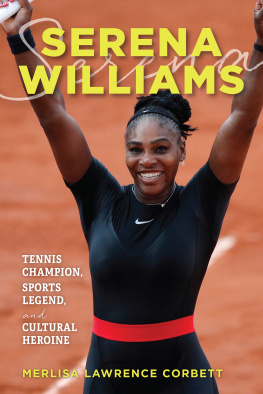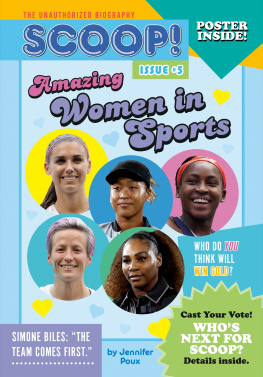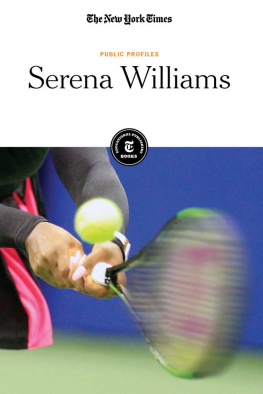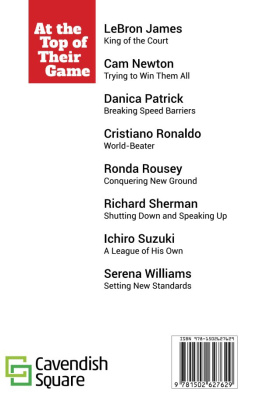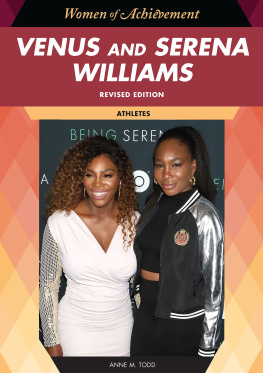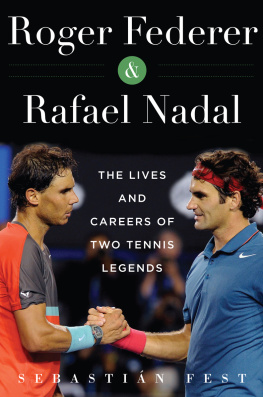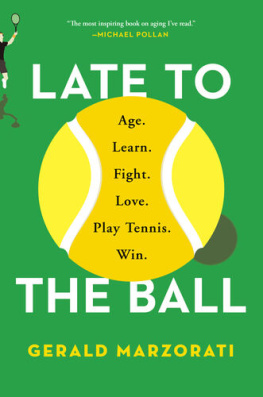Copyright 2002, 2004, 2017 by Matt Christopher Royalties, Inc.
Excerpt from Great Americans in Sports: Mia Hamm copyright 1998, 2015 by Matt Christopher Royalties, Inc.
Cover photograph by Julian Finney/Getty Images.
Cover copyright 2017 by Hachette Book Group, Inc.
Hachette Book Group supports the right to free expression and the value of copyright. The purpose of copyright is to encourage writers and artists to produce the creative works that enrich our culture.
The scanning, uploading, and distribution of this book without permission is a theft of the authors intellectual property. If you would like permission to use material from the book (other than for review purposes), please contact permissions@hbgusa.com. Thank you for your support of the authors rights.
Little, Brown and Company
Hachette Book Group
1290 Avenue of the Americas, New York, NY 10104
Visit us at lb-kids.com
mattchristopher.com
Text paritally adapted from On the Court with Venus and Serena Williams , published in May 2002 by Little, Brown and Company
First Edition: July 2017
Little, Brown and Company is a division of Hachette Book Group, Inc. The Little, Brown name and logo are trademarks of Hachette Book Group, Inc.
The publisher is not responsible for websites (or their content) that are not owned by the publisher.
Matt Christopher is a registered trademark of Matt Christopher Royalties, Inc.
Text written by Stephanie True Peters
Library of Congress Cataloging-in-Publication Data
Names: Peters, Stephanie True, 1968 author.
Title: Serena Williams / With Stephanie True Peters.
Description: First edition. | New York : Little, Brown Books for Young Readers, 2017. | Series: Legends in sports | By Matt Christopher The #1 Sports Series for Kids. | Audience: Age 812.
Identifiers: LCCN 2017009568 | ISBN 9780316471800 (paperback) | ISBN 9780316471831 (ebook) | ISBN 9780316471824 (library edition ebook)
Subjects: LCSH: Williams, Serena, 1981Juvenile literature. | African American women tennis playersBiographyJuvenile literature. | Tennis playersUnited StatesBiographyJuvenile literature. | BISAC: JUVENILE NONFICTION / Biography & Autobiography / Sports & Recreation. | JUVENILE NONFICTION / Biography & Autobiography / Women. | JUVENILE NONFICTION / Sports & Recreation / Racket Sports. | JUVENILE NONFICTION / Sports & Recreation / Olympics. | JUVENILE NONFICTION / Sports & Recreation / General. | JUVENILE NONFICTION / Biography & Autobiography / Cultural Heritage.
Classification: LCC GV994.W55 P48 2017 | DDC 796.342092 [B]dc23 LC record available at https://lccn.loc.gov/2017009568
ISBNs: 978-0-316-47180-0 (pbk.), 978-0-316-47183-1 (ebook)
E3-20170522-JV-PC
Six oclock one warm summer morning in 1984, Richard Williams and his wife, Oracene Price, loaded their yellow Volkswagen minibus with a shopping cart and several milk crates full of tennis balls. They added tennis rackets and a broom. Then they called for their five daughtersYetunde, Isha, Lyndrea, Venus, and Serena. The girls clambered into the van. One of the older ones helped Serena, who was not quite four, into her seat.
The family drove from their modest home in Compton, California, to a nearby public park. Richard pulled into a small lot adjacent to the tennis courts. No one was playing tennis on them, though a few young men lingered on the sidelines, just hanging out. Glass from broken bottles and fast-food wrap pers littered the playing area. Graffiti was spray-painted on the surface.
Undeterred, Richard and Oracene ushered their daughters from the van and retrieved the balls, broom, and rackets. While the three older girls helped sweep up, Serena got into her stroller, and Venus pushed her to one side of the court.
When the surfaces were clear of debris, the four older girls grabbed rackets and hurried onto the courts with their mother. Serena stayed in her stroller. Its what she usually did during these outings.
But not this time. This time, her father held out a racket and motioned for her to join him.
She got out of the stroller and took the racket. It was almost as big as she was and felt heavy in her small hands. She was too excited to notice. After watching her sisters from the sidelines for as long as she could remember, she was finally getting her turn to play.
Her father tossed a tennis ball in the air and hit it gently over the net to her. Swing at the ball, he called out.
She giggled and swung. Her momentum spun her almost completely around. Her white tennis skirt with purple, pink, and gray flowers flared out in a bell. She missed the ball, which bounced and rolled away.
Just swing, her father instructed.
For the next hour they stood in the hot sun, father and daughter, as Williams patiently taught his youngest how to strike a tennis ball with a tennis racket. At first she hit the ball mostly by accident. Richard occasionally stopped, placed his hand around his daughters on the racket, and showed her how to sweep it through the air and hit the ball in the center of the rackets strings. She began to make consistent contact.
When the crates were empty, they gathered up the loose balls, making a game of seeing who could get the most, and started over. Finally, Richard held up a ball. Last one! he called out.
Last one, Serena responded with a laugh. He tapped the ball toward her, and she swung.
Thwack! The ball made a distinctive sound as it struck the rackets strings. Oracene and the other girls cheered. Then they gathered up the equipment, loaded it back into the van, and returned home.
For the four older girls, that early morning tennis practice was like most other morning practices. For the youngest, however, it was the first step toward the making of a champion.
A champion named Serena Williams.
The story of Serena Williams begins in an unlikely place: Compton, California. Then as now, Compton was poor, and many residents of the mostly African American and Hispanic inner-city community strug gled to make ends meet. The buildings were run-down. Crime and poverty were rampant. Gang members sold drugs and engaged in other illegal activities in public placesincluding the parks where Richard took the girls to play tennis.
Sometimes, the gang members told Richard that he and his girls werent welcome. Williams refused to be intimidated. He stood up for his right to use the courts. Eventually, the locals left them in peace.
But the parks were still dangerous places to be.
One afternoon when Serena was about seven, she was with her father and Venus at East Compton Park (now East Rancho Dominguez Park). Midway through practice, a carload of young men cruised by the courts. One of the men stuck a gun out the window and started shooting.
At first, I just thought someone was setting off firecrackers or popping some balloons, Serena said years later.
Venus, Serena, and Richard hit the ground as bullets flew all around them. Gang members hanging out in the park ran and hid. Seconds later, the firing stopped and the car sped away.
Serena and Venus were shaken up by the drive-by shooting, but Richard calmed them down. Keeping a watchful eye out, he convinced them to resume practice.
There was no place in the world that was rougher than Compton, Richard once commented. The ghetto will make you rough, itll make you tough, itll make you strong.
Richard wanted his girls to grow up strong. He also wanted them to have a future beyond Compton. Their future was all he and Oracene were thinking about when they decided to teach their daughters to play tennis. And not just playthe goal was for them to become world-class professional players.


